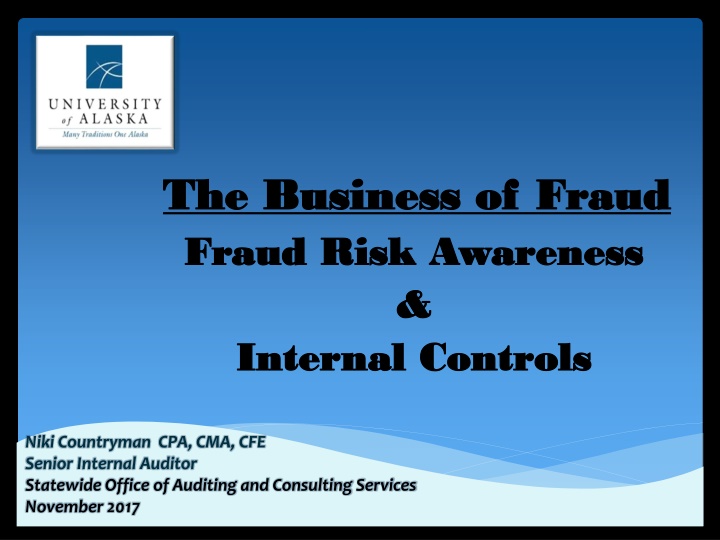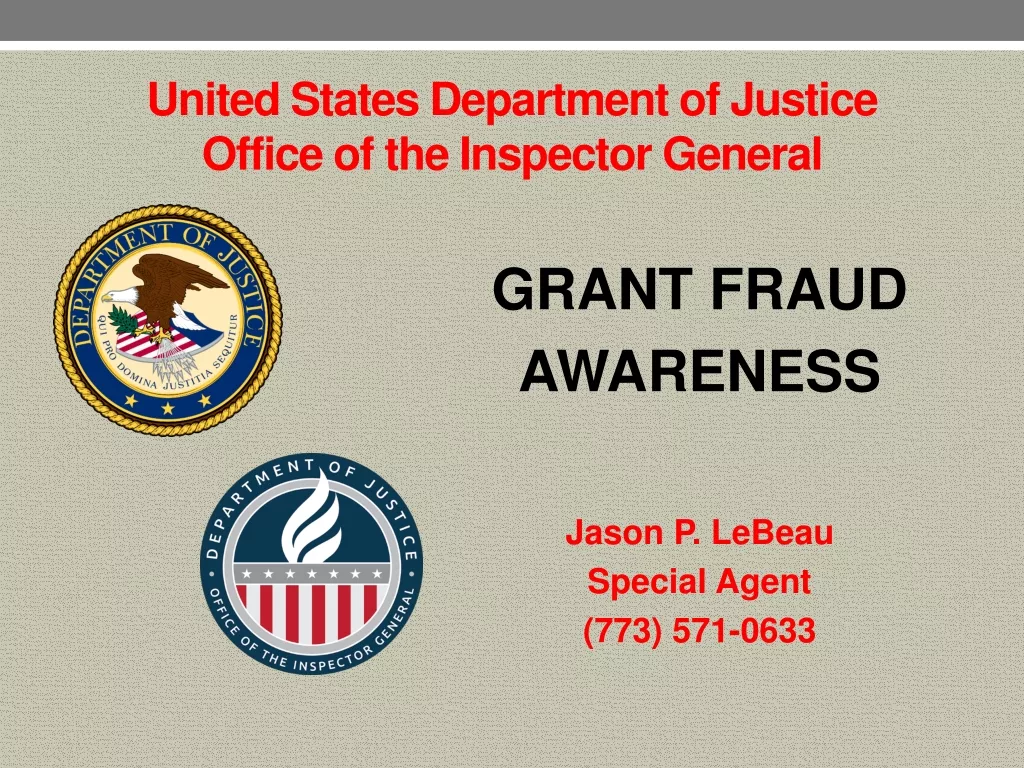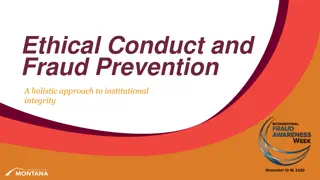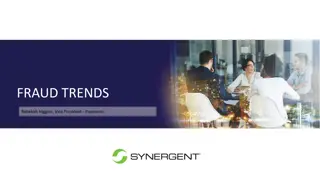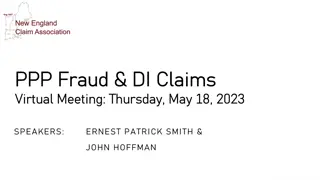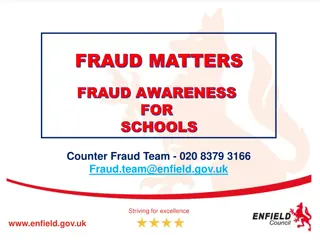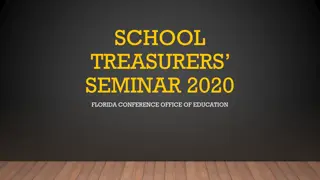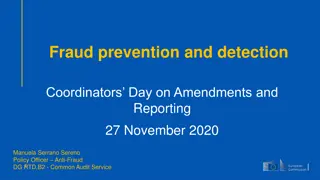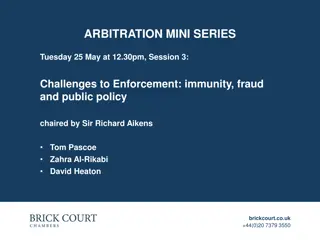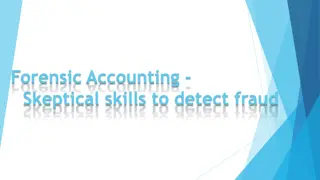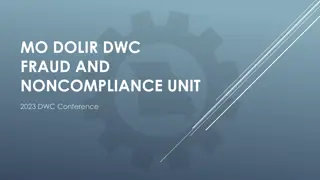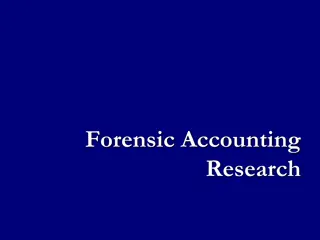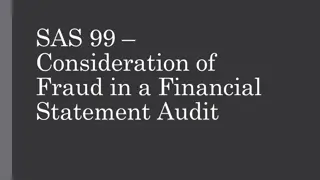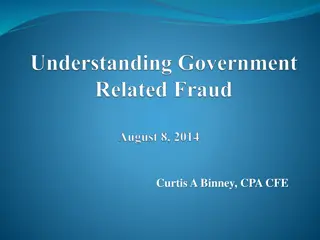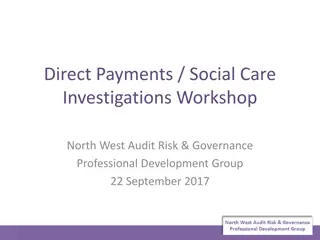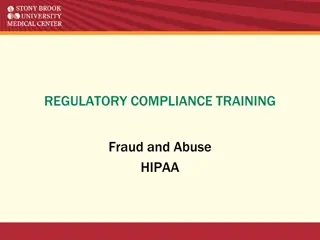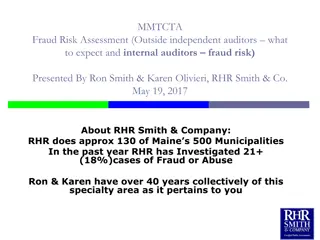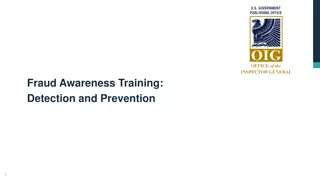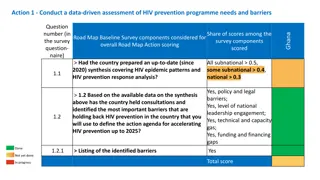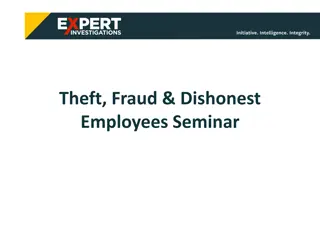Fraud Awareness and Prevention Strategies
Impact of fraud on organizations with real-life cases, learning objectives for fraud risk awareness, key internal controls for fraud prevention, and statistics highlighting the cost of fraud globally. Discover insights into detecting and deterring fraud to safeguard your organization's assets and resources.
Download Presentation

Please find below an Image/Link to download the presentation.
The content on the website is provided AS IS for your information and personal use only. It may not be sold, licensed, or shared on other websites without obtaining consent from the author.If you encounter any issues during the download, it is possible that the publisher has removed the file from their server.
You are allowed to download the files provided on this website for personal or commercial use, subject to the condition that they are used lawfully. All files are the property of their respective owners.
The content on the website is provided AS IS for your information and personal use only. It may not be sold, licensed, or shared on other websites without obtaining consent from the author.
E N D
Presentation Transcript
The Business of Fraud The Business of Fraud Fraud Risk Awareness Fraud Risk Awareness & & Internal Controls Internal Controls Niki Countryman CPA, CMA, CFE Senior Internal Auditor Statewide Office of Auditing and Consulting Services November 2017
Learning Objectives Discuss Fraud Awareness and Scenarios Discuss how to Identify Fraud Identify Key Internal Controls for Preventing, Deterring and Detecting Fraud Additional Assistance and Resources
The use of ones occupation for personal enrichment through the deliberate misuse or misapplication of the employing organization s resources or assets Association of Certified Fraud Examiners
The Cost of Fraud Fraud costs a typical organization an estimated 5% of its annual revenue - Total potential loss globally of $3.7 trillion annually - Total potential loss University of AK of $46.5 million annually Median loss caused by fraud globally was $150,000 39% of all cases were detected by a tip Median detection time was 18 months Association of Certified Fraud Examiners, 2016 Report to the Nations
Fraud Cases in the News Former University of Missouri employee admits embezzling more than $700,000 Carla Rathmann, a former University of Missouri-Columbia employee, pleaded guilty Monday to one count each of mail fraud and credit card fraud in connection with the theft of more than $716,000 from the school over a span of nine years. The university's insurance carrier is expected to reimburse the school approximately $650,000. By Koran Addo, St. Louis Post-Dispatch June 6, 2016
Fraud Cases in the News Ex-finance director at UM s Rosenstiel School admits embezzling $2.3 million A former University of Miami finance director embezzled $2.3 million from the college by falsifying bills for a bogus vendor and depositing the ill gotten payments into the bank account of a fabricated business she had set up to hide the income, authorities said. The factual statement filed with the plea deal stated that "between 2002 and 2012, Miller used her authority at [Rosenstiel] to embezzle from the University of Miami, by falsifying invoices from a vendor called International Assets, [the school's] print shop." By Jay Weaver, Miami Herald May 25, 2016
Fraud Cases in the News Drake State misused more than $200,000 in grant money, audit finds Months after two top-ranking officials at Drake State Community & Technical College were forced into retirement, including the president, a state audit revealed the Huntsville school misused more than $200,000 in federal grant money. According to the audit, Drake State twice drew down the same $211,778.45- once in the 2014 fiscal year, the other in the 2015 fiscal year. A "lack of internal controls," the audit said, was responsible for the money being withdrawn twice, failing to comply with federal mandates. By Paul Gattis, pgattis@al.com July 5, 2016
Identify the Fraudster If you want to know what a fraudster looks like, look to the person on your right, then to the one on your left, and it will look like the person in the middle. White- collar criminals look like you and me. Investigative and Forensic Services Director Jeff Matthews Grant Thornton, LLP
Who Commits Fraud? Management Manipulation of the accounting records Employees Stealing the University s assets such as cash, inventory, etc. Fraudulent disbursements Vendors Shell Companies Bid Rigging
For Fraud to Exist (Incentive/Pressure) FRAUD TRIANGLE Rationalization Opportunity
Opportunity to commit fraud arises when employees have access to assets, including information, that allows them to both commit and conceal Weak or non-functioning internal controls Poor management supervision, review and approval Misuse/abuse of one s position and authority Collusion Association of College and University Auditors
Types of Fraud Types of Fraud Misappropriation of assets theft or misuse of the university assets Corruption - abusing influence and power within the university to obtain some benefit at the university s expense Fraudulent Financial Reporting intentional misstatements or omissions of amounts or disclosures in financial statements Association of Certified Fraud Examiners
Examples of High Risk Examples of High Risk Transaction Areas Transaction Areas Purchase of Goods and Services Cash Receipts Payroll Procurement Card Inventory Employee Reimbursements Using assets, such computers or vehicles, without permission
Detection of Fraud Schemes Detection Method Tip Management Review Internal Audit Account Reconciliation Document Examination External Audit Surveillance/Monitoring IT Controls Other Percentage of Cases 37.0% 14.3% 14.1% 6.1% 4.8% 4.0% 1.9% 1.5% 16.3% Association of Certified Fraud Examiners, 2016 Report to the Nations
Identifying Key Internal Controls for Preventing, Detecting and Deterring Fraud Prevention Prevention Detection Response
Defining Internal Control Internal Control is a process put into place to provide reasonable assurance that business objectives will be achieved. Reporting Operations Effective and efficient use of resources Preparation of internal and external financial and non-financial reporting Compliance Compliance with laws and regulations Committee of Sponsoring Organizations of the Treadway Commission (COSO)
Internal Control Balance Standard is Reasonable Reasonable Assurance TOO LITTLE CONTROL PRESENTS UNDUE TOO LITTLE CONTROL PRESENTS UNDUE RISK Loss of assets, doors or grants Poor business decisions Public scandals and reputational damage Cost to repair damage from Fraud and/or Noncompliance RISK EXCESSIVE CONTROLS ARE COSTLY AND COUNTERPRODUCTIVE EXCESSIVE CONTROLS ARE COSTLY AND COUNTERPRODUCTIVE Increased bureaucracy Reduced productivity Increased complexity Increased cycle time Association of College & University Auditors
Internal Control Frameworks Common Frameworks: COSO Internal Control- Integrated Framework Five components 17 Principles Standards for Internal Control in the U.S. Federal Government (aka the Green Book ) Control Objectives for Information and Related Technology (COBIT) International Organization for Standardization (ISO) 20
Control Activities Control Activities Creation of a control conscious environment Conducting a Fraud Risk Assessment Segregation of duties Authorizations, approvals and verifications Control over physical and intellectual assets and records Monitoring
Control Conscious Control Conscious Environment Environment Control Environment: Senior Management commitment to strong internal controls is the number one factor of a strong control environment. Moss Adams, LLP Control Environment Factors: A Code of Conduct for a department can facilitate in setting the tone of an organization. Management needs to create a culture through words and actions which make it clear that fraud: Will not be tolerated Will be dealt with swiftly and decisively Whistleblowers will not suffer retribution Committee of Sponsoring Organizations of the Treadway Commission
Internal Control & Fraud Risk Internal Controls should align with the organization s Fraud Risk Assessment Identify Risks Implement Internal Controls to Mitigate them Two types of controls that aid in reducing the risk of fraud: Preventive Controls: intended to prevent fraud before it occurs Detective Controls: intended to detect fraud if it does occur
Segregation of Duties Is a preventive control that is vital in the prevention of fraud and the reduction in or prevention of errors Implemented to ensure no one person has control over all parts of a transaction Controls and processes are designed to implement a system of checks and balances Moss Adams, LLP
Functions to be Separated Authorization Monitoring Custody Recording
Authorizations, Approvals & Authorizations, Approvals & Verifications Verifications Limit authorization authority Secure access to electronic signatures NEVER sign a blank form Develop written procedures outlining delegation guidelines Ensure authorization is at appropriate level
Asset Custody Asset Custody Periodic asset counts Periodic comparisons Investigation of discrepancies Physical safeguards against theft and damage Confirmation of receipt of goods
Financial Reporting - Safeguard passwords - Reconcile bank statements - Review account coding - Compare budgeted with actual expenditures - Training and communication on Accounting and Administrative Manual
Monitoring Monitoring Achieve the objectives of Achieve the objectives of effective and efficient effective and efficient operations, reliable financial operations, reliable financial reporting and compliance reporting and compliance with laws and regulations with laws and regulations Internal Control is Internal Control is Management s Responsibility Management s Responsibility Develop and implement appropriate, cost Develop and implement appropriate, cost- -effective internal control internal control Perform ongoing Perform ongoing evaluations of components of evaluations of components of internal control internal control Evaluate and communicate internal control Evaluate and communicate internal control deficiencies in a timely manner deficiencies in a timely manner effective
UA Confidential Hotline Hosted by NAVEX Global EthicsPoint EthicsPoint is used by hundreds of higher education institutions Third-party hosted to provide the best option for anonymity Available via toll-free telephone and web intake Different types of issues/concerns can be reported: Financial: fraud, waste, abuse Ethical misconduct Safety and environmental Compliance Human resources (i.e.: bullying) Protection of minors Implemented late FY14 30
Internal Control Resources The Committee of Sponsoring Organizations (COSO) www.coso.org General Accountability Office www.gao.gov/greenbook American Institute of Certified Public Accountants www.aicpa.org Institute of Internal Auditors www.theiia.org Association of Certified Fraud Examiners www.acfe.org Association of College and University Auditors www.acua.org UA Statewide Office of Audit and Consulting Services www.alaska.edu/audit 31
University of Alaska System Office of Audit and Consulting Services For more information, contact Niki Countryman, CPA, CMA, CFE Senior Internal Auditor 786-7756 nrcountryman@alaska.edu http://www.alaska.edu/audit/ Statewide Office of Audit and Consulting Services 1815 Bragaw St, Suite 209G 32
